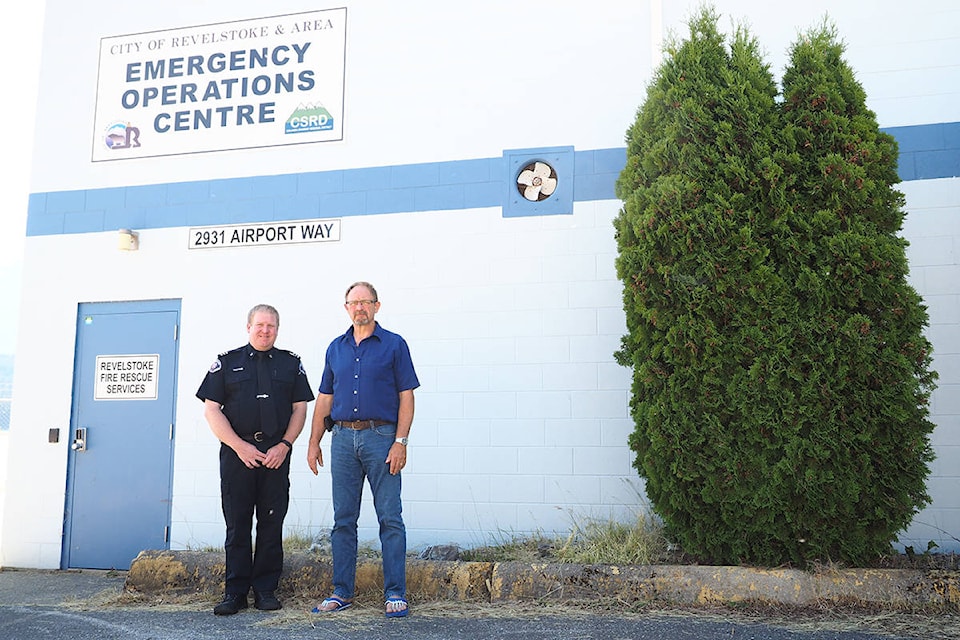In Revelstoke, it can be easy to be complacent about the threat of wildfires. Given our wet environment in an interior rainforest, and the relative lack of major fires around here while others have burned as of late, I’ve heard people call the community “fireproof.”
Ask the experts, and they’re not so confident. “Revelstoke will likely be threatened by wildfire in the future – the question is not IF this will happen, the question is WHEN?” says a 2015 report on wildfire fuel breaks around the community.
The Revelstoke Community Wildfire Protection Plan makes a similar statement in a section looking at historic wildfires. “Even in Revelstoke’s relatively wet climate, during extreme fire seasons, when high winds occur, there is a significant risk that wildfires in this area can become uncontrollable and threaten property and lives,” the authors wrote.
How is Revelstoke at risk? The wildfire protection plan says the water treatment plant faces the biggest threat, with a mixture of high probability of fire and extreme consequence. Other areas with high fire probability where a fire could have consequences are the Bridge Creek watershed in Mount Revelstoke National Park, Alpine Lane above the Trans-Canada, parts of the Big Eddy, most of the Begbie Bench and the forests on Revelstoke Mountain Resort and BC Hydro lines.
Fortunately, most of the community is surrounded by natural and man-made fuel breaks. The 2015 report on fuel breaks says the community is generally well protected by things like highways, avalanche paths, hydro lines and rivers. Fuel breaks are lacking in the South Revelstoke area, and the north slope of Mount Revelstoke, directly above town.
Shelly Bird, the spokesperson for Mount Revelstoke National Park, said they were working on removing fuels around the base of the mountain. They are also planning a prescribed burn along the frontside of the mountain to help prevent fires from spreading.
“It’s helping prevent the spread of wildfire so if a wildfire did ignite on the mountain, it wouldn’t be likely to spread down the front face of the mountain,” said Bird.
The front face of Mount Revelstoke is considered an “intensive zone” for wildfire response.
“In the intensive zone, we’re going to hit it with everything we’ve got because it’s a priority to protect the assets in the surrounding communities,” said Bird.
What would happen if a wildfire threatened Revelstoke? On Friday, I visited the city’s emergency operations centre with Dwayne Voykin, the emergency management program coordinator, and Gary Sulz, the manager of Emergency Social Services.
“This room is a war room where everybody can come here and we have all the documents required to put a major event in order,” said Sulz.
The centre isn’t much — a few phones, a TV, maps and lots of binders filled with various plans – but if a fire or other emergency threatened the community, this is where emergency personnel and city staff would go to run things.
“We are prepared to jump on anything right away. That would be the key — to get a handle on it quickly,” said Voykin. “We’d be calling on BC Wildfire to assist right away.”
A few things would happen if there was a risk of an evacuation. The EOC would be activated and evacuation alerts would be sent out via the media, the city website, and social media. An alert means you should get ready to leave. I was given a set of pamphlets from PreparedBC on what to do in the case of an emergency, including an extensive list on what to do in case of an evacuation alert:
— Gather your essential items such as medication, glasses, important documents and any valuable keepsakes you couldn’t live without;
— Make sure you know where everyone in your family is and plan a meeting place if you’re apart. If your kids aren’t with you and you can’t get them, find someone who can;
— Prepare to evacuate people with disabilities, elderly and children;
— Ensure you have a way to get your pets to safety;
— Find lodging with a family member, if possible;
— Keep a full tank of gas in your car;
— If you don’t have a car, the evacuation alert will include information on how to be picked up.
The pamphlets included a list of items everyone should have ready in case of an evacuation, including four litres of water per person per day, three-days of non-perishable food, medication, clothing, toiletries, a battery-powered radio, a fully-charged cellphone, First Aid kit, copies of important documents and more.
An evacuation order, the next step up, would be issued if people needed to leave part of all of the communit. Emergency personnel would go door to door telling people to leave, and assisting if needed, while individuals would be expected to gather their items and proceed to the nearest evacuation site to register with authorities.
“People should be prepared to look after yourself for 72 hours,” said Voykin.
In the event of an evacuation, people would be expected to register at the community centre — or another location if it wasn’t accessible. Residents could be housed there or placed in hotels if they had nowhere else to go.
Meanwhile, the EOC would be communicating with personnel on the ground to find out what resources are needed, and vice versa.
“If it’s to the point where we need to get people out of the community, then we’d be coordinating with another community about where we can send people,” said Sulz. “What we’re dealing with would determine where we need to go.”
